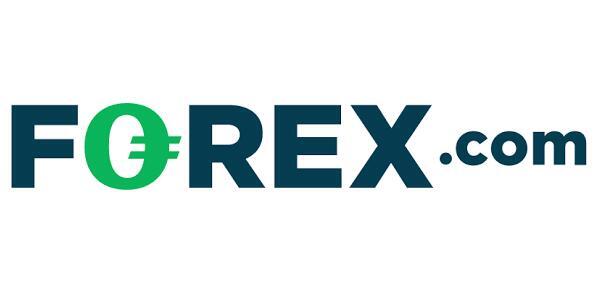
The issuer is essentially borrowing or incurring a debt that is to be repaid at “par value” entirely at maturity (i.e., when the contract ends). In the meantime, the holder of this debt receives interest payments (coupons) based on cash flow determined by an annuity formula. From the issuer’s point of view, these cash payments are part of the cost of borrowing, while from the holder’s point of view, it’s a benefit that comes with purchasing a bond. A bond’s yield is the return to an investor from the bond’s interest, or coupon, payments. It can be calculated as a simple coupon yield or using a more complex method like yield to maturity.
If you buy a bond at issuance, the bond price is the face value of the bond, and the yield will match the coupon rate of the bond. That is, if you buy a bond that pays 1% interest for three years, that’s exactly what you’ll get. When https://online-accounting.net/ the bond matures, its face value will be returned to you. Its value at any time in between is of no interest to you unless you want to sell it. A bond that pays a fixed coupon will see its price vary inversely with interest rates.
- When a bond changes hands in the secondary market, its value should reflect the interest accrued previously since the last coupon payment.
- As bond prices shift, you can reverse engineer market expectations about interest rates and future market expectations.
- If an investor knows that the semi-annual YTM was 5.979%, they could use the previous formula to find the EAY of 12.32%.
- He currently researches and teaches economic sociology and the social studies of finance at the Hebrew University in Jerusalem.
- However, if the coupon payments were made every six months, the semi-annual YTM would be 5.979%.
The investors will lend the money to the bond issuer by buying the bond. The investors will get the returns by receiving coupons throughout the life of the bond and the face value when the bond matures. With this bond price calculator, we aim to help you calculate the bond price issued by a government or a corporation. Finding out the current bond price is one of the most critical procedures for bond investors, as miscalculating can lead to huge losses.
The price of a bond fluctuates with the market rate over time. If the bond sells for a price higher than its face value, the difference is known as a bond premium. If the bond sells for a price lower than its face value, the difference is known as a bond discount. The amount of the premium or discount excludes any accrued interest on the bond.
Solving the problem using BA II Plus Financial Calculator
Formula 14.3 summarizes this calculation, which combines Formulas 9.3 and 11.4 together and simplifies the resulting expression. Because the bond pays interest semi-annually, two days of the year are defined as the interest payment dates. To determine a bond’s selling price on these two days, you must use the formulas for present value of an ordinary annuity.

A bond is a financial instrument that governments and companies issue to get debt funding from the public. The size of the bond market, also known as the fixed-income market, is twice the size of the stock market. A bond with an interest rate equal to current market rates sells at par. If current market rates are lower than an outstanding bond’s interest rate, the bond will sell at a premium.
The current yield of a bond is the annual payout of a bond divided by its current trading price. That is, you sum up all coupon payments over one year and divide by what a bond is paying today. Where ppp is the bond price, cf\rm cfcf is the cash flows (coupons or the principal), rrr is the bond yield, and nnn is the years to maturity. If you’re an investor looking to enter a bond investment via secondary markets, you’ll likely be able to buy a bond at a discount. If you’re holding onto an older bond and its yield is increasing, this means the price has gone down from what you paid for it. However, you’ll still earn the coupon rate from your initial investment.
What is a bond yield? Bond yield definition
When bonds are quoted in a system like a Bloomberg or Reuters terminal, the clean price is used. Assume a bond has four years and eight months to maturity. The exponent in the yield calculations can be turned into a decimal to adjust for the partial year.
Stocks vs. Bonds: What’s The Difference? – Forbes Advisor – Forbes
Stocks vs. Bonds: What’s The Difference? – Forbes Advisor.
Posted: Wed, 15 Mar 2023 07:00:00 GMT [source]
Apply Formula 14.4 to determine the bond premium or discount. Also called the par value or denomination of the bond, the bond face value is the principal amount of the debt. It is what the investor lent to the bond-issuing corporation.
What is a bond price? Understanding the dynamic of the bond price equation
The bond yield curve is one of the best instruments to analyze the evolution of bond yields. On the other hand, if the bond yield curve is trending downwards, the 10-year bond yield will be lower than the 2-year bond yield. While many bonds will issue coupon payments, some will only pay out once they are fully mature.
Generally speaking, bonds will continue to increase in value as they get closer to maturity. This is because the final face value payment, which is almost always the largest portion of the bond, will come sooner, rather than later. In this situation, you would receive $30 every year for the next 10 years, followed by a $1,000 final payment. If you were to buy the bond today—assuming there is no risk of default—this bond would cost $845.57. A bond’s dollar price represents a percentage of the bond’s principal balance, otherwise known as par value.
How to calculate the issue price of a bond
The yield curve is a graph drawn of bond yield against time. If the yield curve is trending upwards, it means that long-term bond yields are higher than short-term bond yields. You must also determine the amount of time that has passed since the bond’s issuance plus how much of the premium or discount has amortized. Typically, amortization is calculated on a straight-line basis.
He currently researches and teaches economic sociology and the social studies of finance at the Hebrew University in Jerusalem. To see where the issue date and serial number are found on a bond, see our diagram. Here, “rate” corresponds to the interest rate that will be applied to the face value of the bond.
That is, if a bond was purchased at issuance, it would often be purchased in fixed, “clean” increments like $100 and would receive only coupon rate payments. It is the rate of return bond investors will get if they hold the bond to maturity. Typically, it is distributed annually or semi-annually depending on the bond.
In such a situation, even a negative yield is still better than storing cash since hyperinflation might happen. Also known as book value, the carrying value of a bond represents the actual amount that a company owes the bondholder at any given time. Carrying value is often referred to by the terms book value and carrying amount. Laura started her career in Finance a decade ago and provides strategic financial management consulting.
Calculate PV of a Different Bond Type With Excel – Investopedia
Calculate PV of a Different Bond Type With Excel.
Posted: Sat, 25 Mar 2017 11:15:14 GMT [source]
? You might also be interested in our bond price calculator or debt to asset ratio calculator. It’s the amount carried on a company’s balance sheet that represents the face value of a bond plus any unamortized premium or less any unamortized discount. It’s essentially the amount owed by the bond issuer to the bondholder.
Bond Yield Calculator – Compute the Current Yield
We have prepared this bond yield calculator to help you to calculate the bond yield on different bonds. Bond yield is usually taken as the rate of return for bond investors (see rate of return calculator). As this metric is one of the biggest factors impacting the bond price, we need to fully online-accounting.net 13.12 understand the bond yield definition. Bond prices are worth watching from day to day as a useful indicator of the direction of interest rates and, more generally, future economic activity. Not incidentally, they’re an important component of a well-managed and diversified investment portfolio.